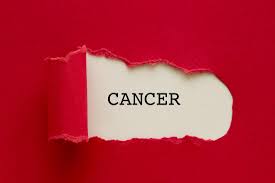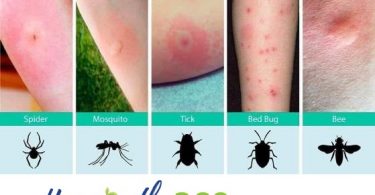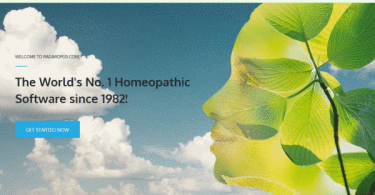
Abstract
Systemic lupus erythematosus is an autoimmune disease mostly seen in women of child bearing years. This article includes 1.medicinal effect of cuttlefish ink , 2. why sepia acts more in systemic lupus erythematosus from symptoms correlation with hering guiding symptoms.
Introduction
Systemic lupus erythematosus (sle) is an autoimmune disease in which organs and cells undergo damage initially mediated by tissue-binding autoantibodies and immune complexes. In most patients, autoantibodies are present for a few years before the first clinical symptom appears, the highest prevalence in african-american and afro-caribbean women and the lowest in white men. SLE is 5.5–6.5 times more prevalent in women than in men.
When the sepia is frightened and in terror, it produces this blackness and muddiness in the water, as if it were a shield held in front of the body. Sepia releases ink via an ink sac which contains melanin, one funnel organ which releases mucus.
Medicinal effect of cuttle fish ink in human body.
Ink contains various compositions like tyrosinases ,dopachrome rearranging enzymes ,peroxidases ,catecholamines ,peptidoglycans ,amino acids ,metals ,toxins.
- Skin Effect
Tyrosinases compound which help for melanocyte stimulating and involved in neurodegenerative disorder such as parkinson’s disease and also in causing melanin browning reaction important to the cosmetics and which help to prevent melasma and malar rash which are present in sle.
- Hematopoietic Effect
Cuttlefish ink may enhance immune response by affecting hematopoiesis. It promotes proliferation and differentiation of granulocytes and monocytes progenitor cells. This cells produce monocytes during homeostasis which are helpful in haematological effect during sle as leukopenia and lymphopenia ,because sle mostly begins with rna ,dna ,and proteins by toll like receptors in plasmacytoid dendritic cells and monocytes/macrophages. They produce interferons alpha and this interferons responsible for active inflammatory state of sle.
- Anti hypertensive effect.
An angiotensin converting enzyme purified from ink causes dilation of vessels resulting in lower blood pressure. This can prevent such cardiovascular events in sle. Which helps to prevent myocardial infarction and pulmonary embolism and stroke.
- Anti ulcerogenic effect.
Ink from fish can use in anti ulcerogenic drugs.the action fraction contains unidentified low molecular weight maelanoprotiens that might be responsible for the activity by enhancing the glycoprotein activity in gastric mucosa. In sle it prevents oral and nasal ulceration.
5.anti inflammtory effect.
This anti-oxidant activity may be related to some of the other effects reported , such as anti-cancer effects, as well as its photoprotective effects. Which can help prevent active inflammation and its further complication.
6. Antimicrobial effect.
It has action against organisms that includes human pathogens. Antimicrobial activity is found in various extracts of ink.
7. Autoimmune and anti cancer effect.
Sepia ink oligopeptide as a tripeptide extracted from sepia ink could be used as an inducer of apoptosis in human prostate cells. This effect is also seen in lung cancer cell treatment via high performance liquid chromatography and fluorescence imaging.
8. Anti retroviral effect.
It helps to prevent viral multiplication and viral infection.
Why sepia acts more on systemic lupus erythematosus ,symptoms corelates with hering guiding symptoms.
1. Cutaneous manifestation
– butterfly rashes on cheeks ,nose. Acute ,subacute ,cutaneous le.( photosensitive ,malar ,maculopapular bullous.)
– chronic cutaneous le ( discoid lupus , panniculitis ,lichen planus like hypertrophic verrucous ,chilblains.)
– oral and nasal ulcer
– non scarring alopecia
Outer head
– great falling out of hair. Climacteric period.
– a boy, aet, 9, had a bald spot on front part of head as large as a silver twenty-five cent piece, of glossy smoothness, hair around appeared as if cut short near roots, place covered with dry, crusty scales; soon after a similar spot on right side of head; finally four bald spots differing in size from a dollar to a quarter.
– eruption on vertex and back part of head dry, offensive, stinging, itching and tingling with cracks; feeling sore when scratching; falling off of hair.
Upper face
– yellow saddle across upper part of cheeks and nose, and yellow spots on face;
– yellow around the mouth.
– circular spots on face and under chin from quarter to half an inch in diameter; several appeared in rapid succession; spots at first red, later covered with a white scarf, then returning to original red color; spots are very slightly raised above the skin and attended with but little itching or sensibility; neuralgic pains shifting about in various parts of body, but more persistently located in occipital region, < remaining long in one position, at night in bed, in morning on rising; > changing positions, and from slight exertion; constant feeling of languor and weariness, making least exertion disagreeable; complete anorexia. Psoriasis.
Nose
– swollen, inflamed nose; nostrils sore, ulcerated and scabby.
– catarrh: pressive pain in root of nose; sore feeling in nose on drawing air through; nose swollen and inflamed, nostrils angry and ulcerated; small ulcers in nostrils; scurfy nostrils; discharge of yellow water from nose,with cutting pains in forehead; dryness in nose and throat; dryness in choanae (through there is much mucus in mouth) with involuntary urging to swallow; catarrhs arising from a retrocession of an eruption.
Teeth and gums
– sore ulcerated gums.
2. Musculoskeletal manifestation.
– synovitis involving more than 2 joints.
– intermittent polyarthritis.
– muscle weakness and myositis
Neck and back
– pain constantly between shoulders and down back.
– stiffness in the back and neck.
– polymyositis.
Lower limb
– acute attack of rheumatism in right knee, which is semiflexed, stiff,
– swollen, red and painful; < at night; great sense of weakness in joint;
– external lateral ligament especially sensitive and painful to touch; extreme sensibility to cold air and to every change of weather.
– swelling of limbs and feel; feet swollen and feel as if asleep; feet burn much at night; at the climacteric.
3. Renal manifestation.
– nephritis
– proteinuria
– hematuria
– casts.
Urinary organs
– urine: clear like water; thick, slimy, offensive, depositing a yellowish, pasty sediment; with much white sediment, fetid; cloudy and dark, as if mixed with mucus; scanty, red deposit; sour-smelling; high-colored, looks like powdered brick; dark-red; deposit of a white, adherent film; turbid, clay-colored, with reddish sediment; blood-red, with white sediment and a cuticle on surface; with dark-brown admixture; lithiasis.
4. Nervous system manifestation.
– cognitive dysfunction includes difficulty in memory and reasoning.
– headache mostly migraine or diffuse type.
– psychosis and acute confusional state.
– myelitis ,peripheral or cranial neuropathies.
Mind
– weak memory.
– heavy flow of ideas; inability for mental activity; it is an exertion to think.
– felt all day as if he did not care what happened; no desire to work,
Inattentive, absent-minded; indolent mood.
– language comes very slowly, has to drag out the words to express ideas; forget the chief points.
– uses wrong words when writing.
– great indifference to everything; no proper sense of life.
– every few minutes inclined to cry, without knowing the cause.
– great sadness and frequent attacks of weeping which she can scarcely
Suppress.
– sad about her health and domestic affairs, discontented with everything.
– depression on waking in the morning.
– aversion to one’s occupation and family.
Sensorium
– stupefaction of the head, mental weakness or dullness, can scarcely think.
– painful confusion in the head, particularly in the forehead.
– momentary attacks of dizziness when walking in open air or while writing.
Inner head
– hemicrania from an affection of the reproductive system; especially in young women in whom the cerebral nerves have excited the sympathetic, producing a long train of hysterical symptoms.
5.hematological manifestation.
– leukopenia or lymphopenia
– thrombocytopenia
6. Vascular occlusion including stroke and myocardial infarction.
Inner head
– apoplexy: in men addicted to drinking and sexual excesses, with a disposition to gout and hemorrhoids; in women from affections of reproductive system; venous form; headache coming on in terrific shocks; dizziness in walking, with staggering; forgetfulness; coldness of feet; intermittent pulse.
– threatening apoplexy in dissipated, middle-aged men who are plethoric, have a large fat abdomen, and are subject to arthritic and hemorrhoidal complaints; they have usually passed through several slight attacks of apoplexy and are frequently visited by the prodromal symptoms.
7. Pulmonary manifestation.
– pleural effusion
– pulmonary fibrosis
– intra alveolar hemorrhage.
Inner chest
– pleuritis after a chronic headache had suddenly vanished.
– severe attack of pleurisy in two old men.
– pleurisy in a boy, aet. 6; exudation had spread over the whole left chest.
– severe attack of pleurisy in a young woman where phos., though apparently indicated, failed.
– chronic pleurisy, threatened phthisis.
– congestion of blood to lungs, palpitation and great anxiety.
– miss h., aet.28, dark brunette, sisters died of consumption, six years ago had an affliction of the lungs and hemoptysis, is a nurse; cough.
8. Cardiac manifestation.
– pericarditis
– pericardial effusion
– valvular insufficiencies.
– heart failure and arrythmias.
– palpitations and tachycardia
Heart , pulse ,circulation
– congestion of blood to lungs, palpitation and great anxiety.
– palpitation: after emotions; with stitches in left side; with anxiety about things which happened years ago; on walking fast.
– wakes up with a violent beating of heart.
– nervous palpitation > by walking fast.
– dropsy as a consequence of valvular insufficiency.
9. Gastrointestinal manifestation.
– nausea ,vomiting ,diarrhea
– intestinal vasculitis
– peritonitis
– increase alt and ast level in the active phase of sle.
Hypochondria
– persistent febrile condition; very weak, keeping his bed; extreme depression of spirits and irritability of temper; occipital headache excessive desire for food, but eats only a small quantity; two or three stools daily and one or two at night, of normal consistency, but clay-colored and offensive; successive outbreaks of furuncles on nates; on right side of abdomen, just below arch of ribs, a very tender spot which is the seat of constant pain; whole right hypochondrium tender and heavy; aching in right shoulder; restless sleep; urine has a pink deposit; heavy sweats at night. Functional derangement of liver.
– jaundice, with stitching pains in forehead, epigastrium and small of back; tearing pains in knees at feet; cannot sleep at night, must constantly change position of legs; lassitude; great thirst; urine stains yellow.
– Chronic diarrhoea in women who suffer from leucorrhoea, hysteria, hysterical hemicrania, sudor hystericus, transient flushes of heat, frequent chilliness, particularly when at stool, and whole facial expression indicates uterine disturbance.
10. Ocular manifestation.
– sicca syndrome and nonspecific conjunctivitis
Sight and eye
– eyes feel sore as if bruised.
– acute catarrhal conjunctivitis, with drawing in external canthus and smarting in eyes, > by bathing in cold water, < morning and evening.
– conjunctivitis with muco-purulent discharge in the morning and great dryness in the evening.
– conjunctivitis; photophobia < in morning; dull redness of conjunctiva;
– lachrymation; swelling of lids and great heat in them.
– severe conjunctivitis, every summer for twenty years, from beginning of warm weather in spring until its close in fall; much enlargement of papillae; marked aggravation in morning and usually in evening.
– phlyctenular conjunctivitis.
– follicular conjunctivitis, or a mixed form of follicular and trachomatous conjunctivitis, which is observed only during the summer, or always < in hot weather.
Conclusion
Systemic lupus erythematosus occurs in women in reproductive age and young. Sepia predominantly female remedy and especially effect on women who are reproductive age ,childbed ,nursing.
As mentioned in hering guiding symptoms
Last section – stages of life and constitution
– especially suitable for persons with dark hair and for women, especially during pregnancy, in childbed and while nursing.
Refferance
1.harrison’s principles of internal medicine 21 edition.
2.https://en.wikipedia.org/wiki/plasmacytoid_dendritic_cell#:~:text=plasmacytoid%20dendritic%20cells%20(pdcs)%20are,found%20in%20peripheral%20lymphoid%20organs.
3.https://www.ncbi.nlm.nih.gov/pmc/articles/pmc4052311/#b126-marinedrugs-12-02700
4.https://www.ncbi.nlm.nih.gov/pmc/articles/pmc5726802/
5.https://www.ncbi.nlm.nih.gov/pmc/articles/pmc5410297/
6.https://en.wikipedia.org/wiki/cuttlefish
7.the guiding symptoms our materia medica by dr constantine hering.





